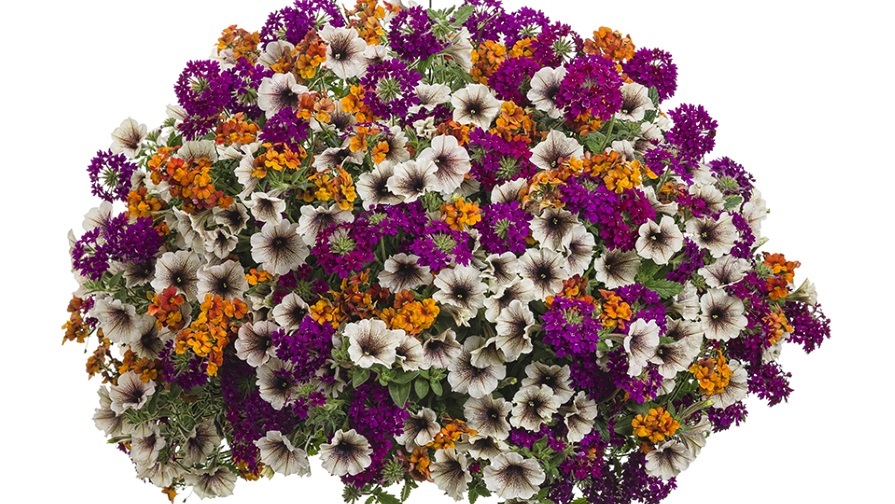Sustainable Horticulture Pays Off

Todd Woodfield
Abby Farms is a family owned nursery and tree farm located in the mid-Atlantic region of Maryland. The farm encompasses more than 350 acres of ball and burlap (B&B) trees, while producing a mixture of one-gallon to 25-gallon container plants, perennials, roses and grasses, along with trees and woody ornamental shrubs, of which we have approximately 350,000 at any given time.
Four years ago, we made the conscious effort and decision to change our production practices to a sustainable, non-chemical approach. To further clarify, we do not use any products that don’t meet the organic certification of our B&B product line, with the exception of glyphosate. In our container production, our two exceptions are synthetic fertilizer use and pre-emergence herbicides. Our long-term goals are aimed at reducing and ultimately eliminating our dependence on them.
In order to make this process successful, you need the full support of the owner and upper management. Managing a large-scale operation is difficult at times, and you must have dedicated people who are willing to work hard to achieve success.
Steps We Took Toward Holistic Production
The big question is, how did we do it? This type of change does not happen as easily as turning off the flow of chemicals. We started with product research (organic products) and matched our pest challenges and/or fungus problems to sustainable certified products that would help us reach our goals.
The second step was to identify what lures were available to use to reduce our pests, and we discovered a multitude of options, such as Japanese beetle lures, bagworm lures and peach or apple borer lures, just to name a few. These pheromone lures are really effective, and the technology is much more advanced than what we had several years ago.
The next challenge was to counteract the damage we were doing to the soil in the B&B field rows by using glyphosate to keep the weeds at bay. The University of Missouri completed a four-year study on the effects of glyphosate, and through this research it was noted that many nutrients are tied up or coagulated together with the repeated use of glyphosate.
At this point, we looked for products to correct or counteract this problem, and we settled on one that can be mixed with glyphosate and applied at the same time to save on labor. We use an enviro-mist sprayer to apply this mixture. The additional product moves the glyphosate into the leaf faster for a quicker kill, while increasing soil bacteria and friendly fungus populations.
Production Changes Require Education And Buy-In From Everyone Involved
The production department went through a huge education process when we started our sustainable farming process. In the beginning, the department consisted of me and one other employee, who had been experimenting with holistic horticulture for many years, but we were never both employed at a company that embraced this process until we joined Abby Farms. We had multiple meetings to sell this approach to the rest of the management team, while educating them on the practice and changes needed to make this work. Needless to say, some were very skeptical.
All plant material is soil- and tissue-tested at a lab twice a year, minimum, so we can keep up with any nutrient changes. For container stock, we will tissue-test it a third time if needed, since we are dealing with artificial media. In house, we test random foliage samples daily. This is one person’s job all growing season. This individual also tests, tracks and logs sap pH, potassium levels, Brix levels and chlorophyll levels, along with the lab soil and tissue reports. Through this process, the nutrient manager can approximate what is happening and what corrective measures need to take place.
The cost in dollars and cents the first year for our field trees was about the same as what it cost to purchase chemical products and synthetic fertilizer, because instead we purchased soil amendments like calcium, gypsum, potassium, copper and zinc. By doing so, we addressed the soil structure so we could feed the trees through the soil and rebalance it while building fungus and bacteria. We can see the difference!
The container products are very similar with component fertilizer sprays; we will still use synthetic fertilizers to meet the production schedules. The savings have showed up in the sequential years, and now we just tweak it a bit to produce a high-quality product at a lower cost. Additional benefits that exist include no chemical signs and daily posting schedules, no chemical log books and a much smaller organic storage room that does not require heating. The majority of products stored are nutritional component sprays that adjust the plant protein or sugar levels and/or make up nutrient shortages in the plant. The bulk storage is made up of household items that can be found in your kitchen that can be purchased in bulk from a restaurant supplier. These items can sterilize insect eggs, overload insect pancreas or break down exoskeletons, all components of death for insects, yet consumed by humans daily. Insect management is actually about how the plant tastes to the insect.
You will notice I do not get into the products to use or the value of sugar translocation to the roots, or the value of protein to reduce insects. You will need to learn this on your own — knowledge is power.
Sustainable or holistic horticulture is everywhere. Most of the companies I know that use this approach do not discuss it openly because a) it is cheaper and gives them a competitive pricing edge for their products and b) most people are doubters. They don’t understand it, so therefore, it can’t work. The real kicker is that every year, it gets easier and easier.









